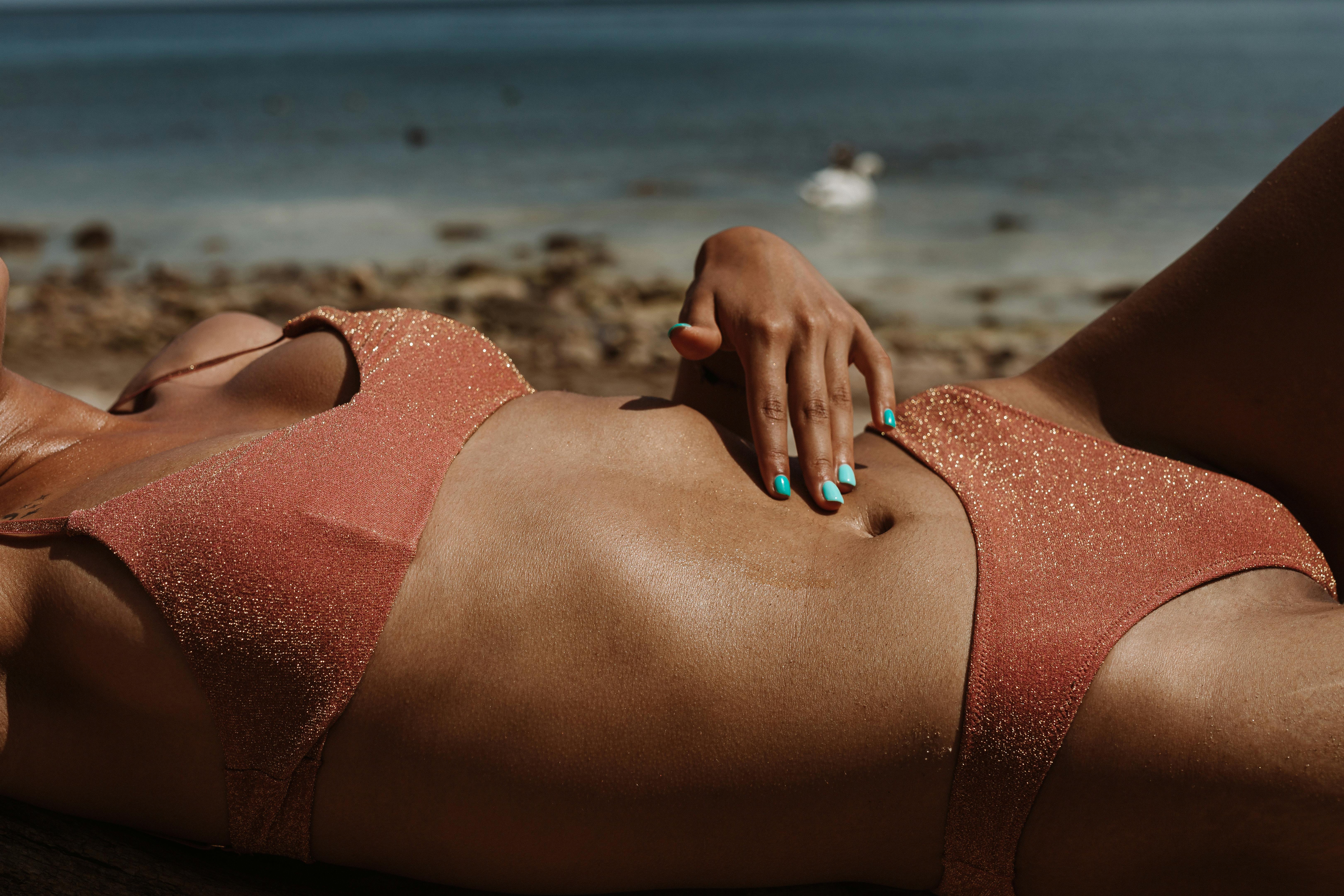Guide to Very Revealing Women's Bathing Suits: Design, Fit and Practical Considerations
Very revealing bathing suits have become a staple in swimwear fashion, offering minimal coverage and maximum freedom of movement. These styles range from high-cut bikinis to string designs and micro cuts that push traditional boundaries. Understanding the design elements, fabric choices, and fit considerations is essential for anyone exploring this bold category of swimwear. This guide provides practical insights into selecting, wearing, and maintaining very revealing bathing suits while considering comfort, support, and appropriate settings.

Very revealing bathing suits represent a distinct category within swimwear, characterized by minimal fabric coverage and bold design choices. These styles have evolved significantly over the decades, reflecting changing attitudes toward body confidence and beach fashion. Whether for sunbathing, poolside lounging, or specific beach destinations, understanding the nuances of these garments helps ensure informed purchasing decisions and comfortable wear.
Design and Coverage: Defining Very Revealing Styles
Very revealing bathing suits encompass several distinct styles, each offering varying degrees of coverage. Micro bikinis feature extremely small triangular tops and minimal bottom coverage, often with string ties. Thong and G-string bottoms expose most of the buttocks, while high-cut legs extend the visual line of the legs. Monokinis combine one-piece construction with strategic cutouts that reveal the torso, sides, or back. Brazilian-cut bottoms offer moderate front coverage but minimal rear coverage. Bandeau tops without straps and triangle tops with thin strings provide minimal bust support. Understanding these design variations helps identify which styles align with personal comfort levels and intended use. The term very revealing is subjective, but generally refers to swimwear that covers less than traditional bikini styles, emphasizing body exposure and minimal fabric use.
Fabric, Support and Construction Details
The fabrics used in very revealing bathing suits must balance minimal coverage with durability and support. Most utilize blends of nylon, spandex, and polyester for stretch, shape retention, and quick-drying properties. Lycra content typically ranges from 15 to 20 percent to ensure the suit maintains its shape after repeated wear and exposure to chlorine, saltwater, and sunscreen. Construction details become critical when fabric coverage is minimal. Reinforced stitching at stress points prevents tearing, while lined gussets in bottoms provide hygiene and comfort. Some designs incorporate underwire or molded cups for bust support, though many very revealing styles prioritize aesthetics over structural support. Adjustable ties and closures allow for customized fit, which is essential given the minimal fabric. Fabric weight matters as well; lighter materials may be less durable but offer better comfort in hot weather, while slightly heavier blends provide more opacity and shape. Quality construction distinguishes well-made revealing swimwear from poorly constructed options that may shift, sag, or become transparent when wet.
Fit, Sizing and Comfort Guidance
Achieving proper fit in very revealing bathing suits requires careful attention to sizing and body measurements. Unlike traditional swimwear with more fabric to accommodate variations, minimal-coverage styles leave little room for error. Most brands provide detailed size charts based on bust, waist, and hip measurements. Trying on suits before purchase is ideal, but when ordering online, accurate self-measurement is essential. Tops should provide adequate coverage without spillage, while bottoms should sit comfortably without digging into skin or requiring constant adjustment. Adjustable features like tie sides, sliding triangles, and hook closures offer flexibility for fine-tuning fit. Comfort considerations include ensuring seams do not irritate skin, especially in sensitive areas, and verifying that elastic bands provide security without excessive tightness. Body type plays a role in style selection; athletic builds may prefer styles with more structural support, while curvier figures might seek designs with wider straps or additional coverage in strategic areas. Comfort also depends on intended activity; lounging requires different support than swimming or playing beach sports. Many wearers size up slightly in very revealing styles to ensure comfort and prevent wardrobe malfunctions.
Styling, Layering and Appropriate Occasions
Very revealing bathing suits require thoughtful consideration of setting and context. These styles are most appropriate for adult-oriented beach resorts, private pools, designated sunbathing areas, and locations with relaxed dress codes. Some public beaches and family-oriented venues may have modesty guidelines that restrict extremely minimal swimwear. Layering options extend versatility; sheer cover-ups, sarongs, kimonos, and beach dresses allow for easy transitions between sunbathing and walking through public areas. High-waisted shorts or skirts can be paired with revealing tops for a more modest look when needed. Accessories like wide-brimmed hats, sunglasses, and beach bags complete the aesthetic while providing practical sun protection. Styling choices also include coordinating colors and patterns; solid colors tend to be more versatile, while bold prints make fashion statements. Confidence plays a significant role in wearing very revealing swimwear; these styles are best suited for individuals comfortable with their bodies and the attention such garments may attract. Understanding local customs and cultural norms is essential when traveling internationally, as swimwear standards vary widely across regions.
Care, Durability and Safety Considerations
Proper care extends the lifespan of very revealing bathing suits, which often feature delicate construction and minimal fabric. Rinsing suits in cool fresh water immediately after use removes chlorine, salt, and sunscreen residue that degrade elastic fibers. Hand washing with mild detergent is preferable to machine washing, which can damage delicate ties and thin fabrics. Air drying away from direct sunlight prevents fading and fabric breakdown; never wring or twist suits, as this distorts shape. Rotating between multiple suits prevents excessive wear on any single garment. Durability concerns include fabric thinning, color fading, and elastic degradation, all accelerated by sun exposure and chemical contact. Safety considerations include sun protection; minimal fabric coverage increases skin exposure to UV rays, making high-SPF sunscreen essential. Reapplication every two hours and after swimming is necessary to prevent burns. Wardrobe security is another concern; ensuring suits stay in place during movement requires proper fit and occasional adjustment. Some wearers use fashion tape or specialized adhesives for additional security. Understanding personal comfort limits and choosing appropriate settings ensures positive experiences with very revealing swimwear.
Very revealing bathing suits offer a bold swimwear option for those seeking minimal coverage and maximum sun exposure. Success with these styles depends on understanding design variations, selecting quality fabrics and construction, achieving proper fit, choosing appropriate occasions, and maintaining garments carefully. By considering these practical factors, wearers can confidently enjoy this distinctive category of swimwear while ensuring comfort, durability, and appropriateness for their chosen settings.




